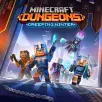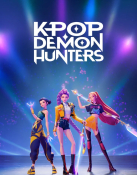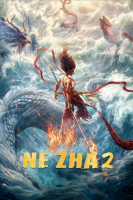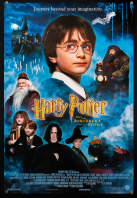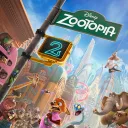How to Train Your Dragon (2025)
How to Train Your Dragon (2025): A Visually Opulent Yet Familiar Flight
Over a decade after The Hidden World seemingly concluded the How to Train Your Dragon trilogy on a note of graceful finality, DreamWorks Animation has returned to the skies of Berk. The 2025 installment, helmed once again by Dean DeBlois, faces the formidable challenge of extending a story that appeared narratively complete. The result is a film of impressive technical achievement and nostalgic warmth, though it occasionally treads overly familiar ground.
Narrative and Structure
How to Train Your Dragon (2025) resumes its tale several years after the emotional farewell between Hiccup and Toothless. Now a seasoned leader, Hiccup is drawn back into conflict by a faction of rogue dragon riders whose ambitions threaten the fragile harmony between species. Parallel to this, the film introduces a younger ensemble of Vikings — most notably Hiccup’s own children — intended to serve as the franchise’s next torchbearers.
Narratively, the film adheres to the classic hero’s journey framework. While it offers satisfying character arcs for both returning figures and newcomers, the screenplay occasionally leans too heavily on callbacks and established tropes. Moments of genuine emotional weight are somewhat diluted by the predictability of key plot turns, which echo beats from earlier installments rather than forging new thematic territory.
Technical and Artistic Merits
Where the film truly excels is in its audiovisual presentation. DreamWorks’ animation pipeline has evolved considerably since the original film’s 2010 debut, and this latest entry stands as one of the studio’s most visually sophisticated works to date. The aerial sequences are particularly notable, with dynamic camera work and meticulously rendered environments that evoke both wonder and vertigo.
The film’s color palette is deliberate and expressive. Early scenes bask in sun-drenched coastal hues, while later sequences adopt shadowy, cool tones to reflect the growing tension. The attention to atmospheric detail — from the shimmer of dragon scales to the movement of ocean spray — is nothing short of exemplary.
John Powell’s score continues to be a cornerstone of the franchise’s identity. His compositions for How to Train Your Dragon (2025) seamlessly weave new motifs with familiar musical themes, enhancing the film’s emotional resonance without overwhelming its quieter moments.
Performances and Characterization
Voice performances remain a consistent strength. Jay Baruchel, reprising his role as Hiccup, delivers a performance marked by maturity and emotional restraint. America Ferrera returns as Astrid, offering both warmth and resolve, while new additions to the cast deliver credible, if somewhat archetypal, portrayals of youthful optimism and rebelliousness.
While primary characters receive ample development, several secondary figures — both human and dragon — serve more as narrative devices than fully realized personalities. This imbalance, though perhaps inevitable in a franchise ensemble, limits the emotional impact of certain pivotal scenes.
Themes and Messaging
At its thematic core, How to Train Your Dragon (2025) reiterates the franchise’s long-standing meditation on coexistence, leadership, and the responsibilities inherent in legacy. The film explores these concepts through generational contrasts: Hiccup’s cautious pragmatism juxtaposed with his children’s impulsive bravery.
Though earnest in its messaging, the film occasionally suffers from a lack of narrative subtlety. Certain moral conclusions are articulated more explicitly than necessary, diminishing their emotional authenticity. Nevertheless, its central message — that trust and empathy remain vital in an increasingly divided world — retains its relevance.
Audience Suitability
While the film is accessible to younger audiences through its lively action and vibrant characters, it also offers sufficient thematic depth and visual sophistication to engage adult viewers. Longtime fans of the series will appreciate the continuity of tone and world-building, though some may find the story’s reliance on nostalgia a limiting factor.
Conclusion
How to Train Your Dragon (2025) is, in many respects, a polished and affectionate return to a world beloved by audiences worldwide. Its visual and auditory achievements place it among DreamWorks Animation’s finest technical efforts. However, its reluctance to stray far from the established formula results in a film that, while emotionally resonant, rarely surprises.
For fans, it offers a welcome reunion and a reminder of the magic that first took flight in 2010. For newcomers, it serves as an entertaining, if somewhat conventional, fantasy adventure. In either case, the skies of Berk remain as beautiful as ever — even if their stories feel increasingly familiar.



